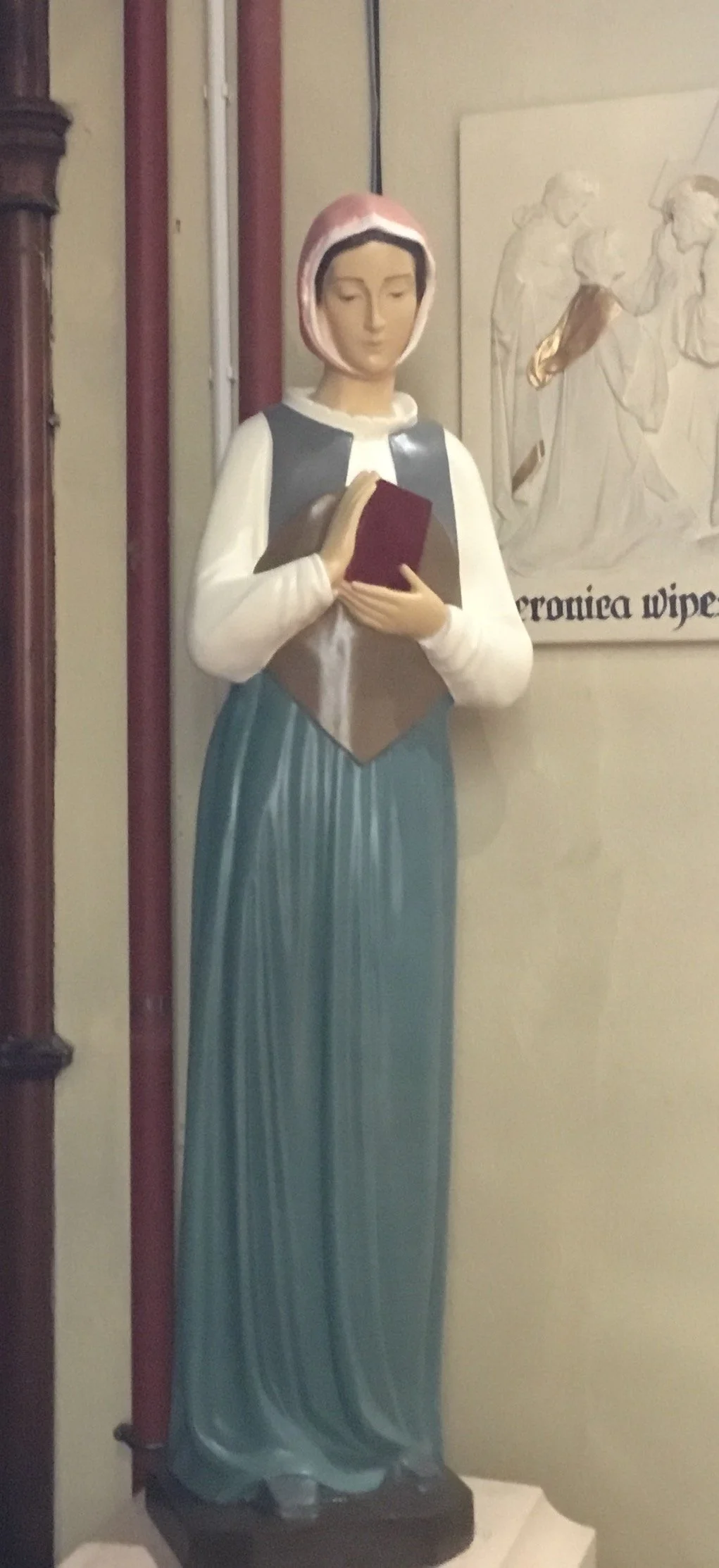St Margaret Clitherow
/At St Catherine’s in Penrith we now have a statue and an icon of Northern saint, St Margaret Clitherow. One of our Appleby parishioners has also just been to the Shrine of St Margaret Clitherow in York and shared this photo.
Margaret Clitherow (1556-1586) risked her life by harbouring Catholic priests in her house in The Shambles, in York during the reign of Elizabeth I. When she was arrested she refused to plead, thereby preventing a trial that would entail her three children being made to testify. She was tortured and sentenced to death. Although pregnant with her fourth child, she was executed at Ouse Bridge in York by being crushed to death.
Sr Mary Stella who wrote our beautiful icon added an explanation of some of its features:
The gold background indicates that Margaret’s life gradually became more centred on God and immersed in God’s ways. Gold is a metal that does not tarnish and is seen as eternal. God is eternally present to us are we also present to God.
The Tudor costume sets Margaret in her time, it is simple as Margaret liked to wear good but simple clothes. She ran her household and would often do the dirtier tasks out of humility, even though she had servants. She was very good at running the family butcher shop, here she met the townspeople who loved her.
Her face is illuminated with God’s love shining through her. She was very good to the poor.
The scroll indicates that although Margaret was illiterate she shared a great deal with her confessor Fr Mush who wrote down her conversations. These reveal her ardent love of Jesus and the Catholic Church.
The red/orange colour of her outer garment symbolises the fiery faith of her martyrdom.
The blue colour of her dress suggests a celestial influence as Margaret allowed God to “Divinise” her.
The shoes highlight that Margaret went to her death bare legged and without her shoes. These she left to her daughter Anne that symbolically she would also follow Christ.













